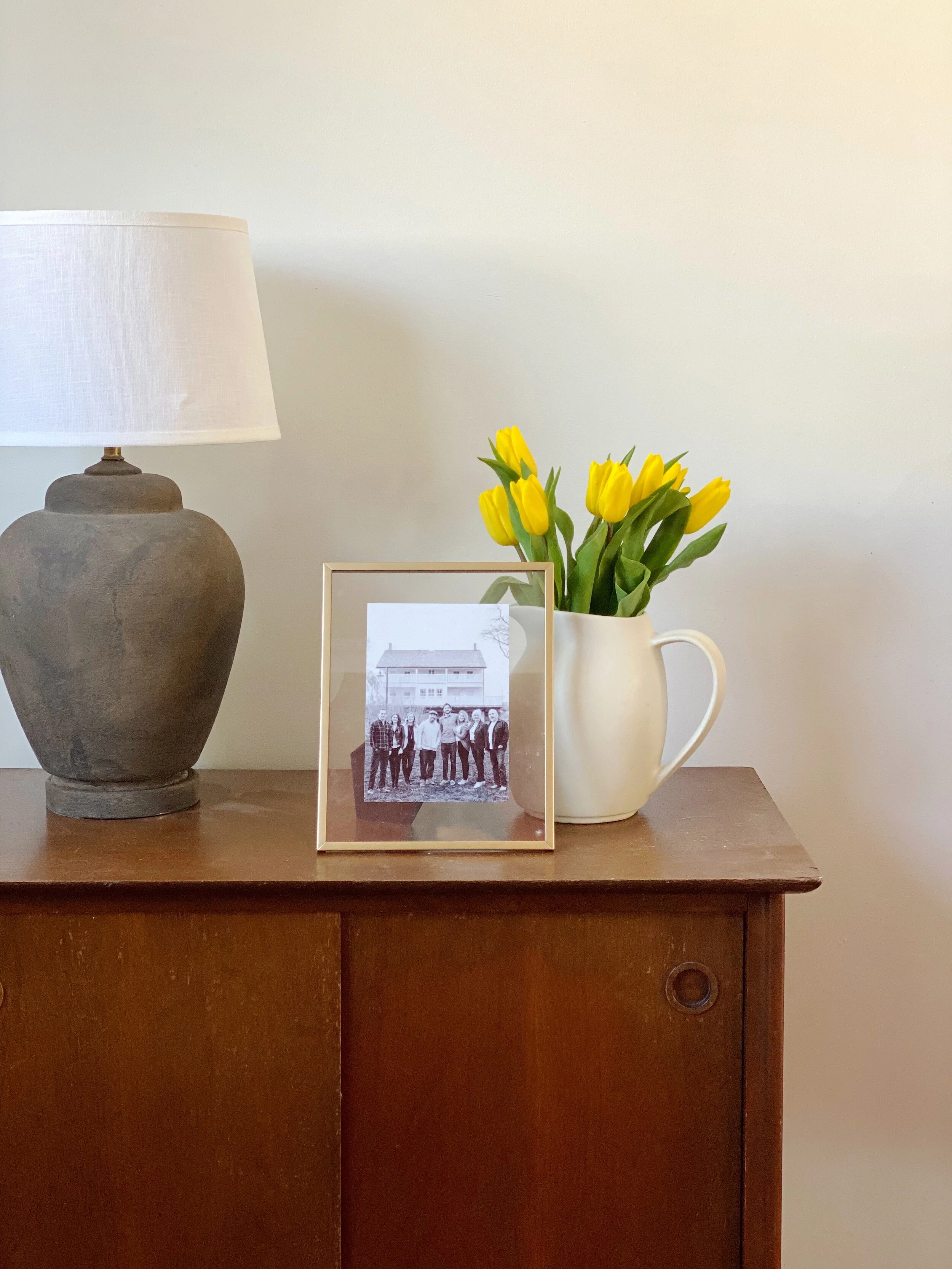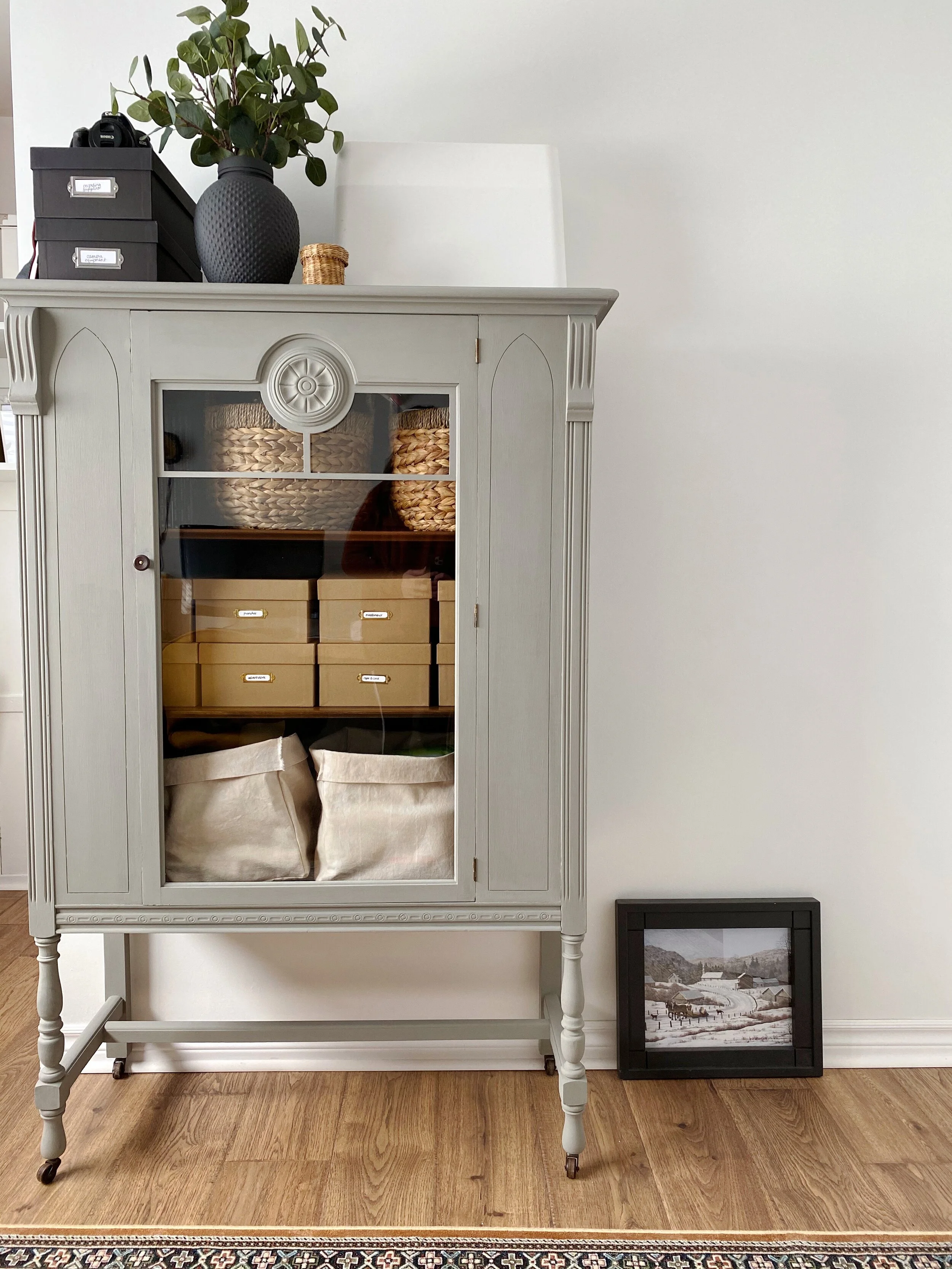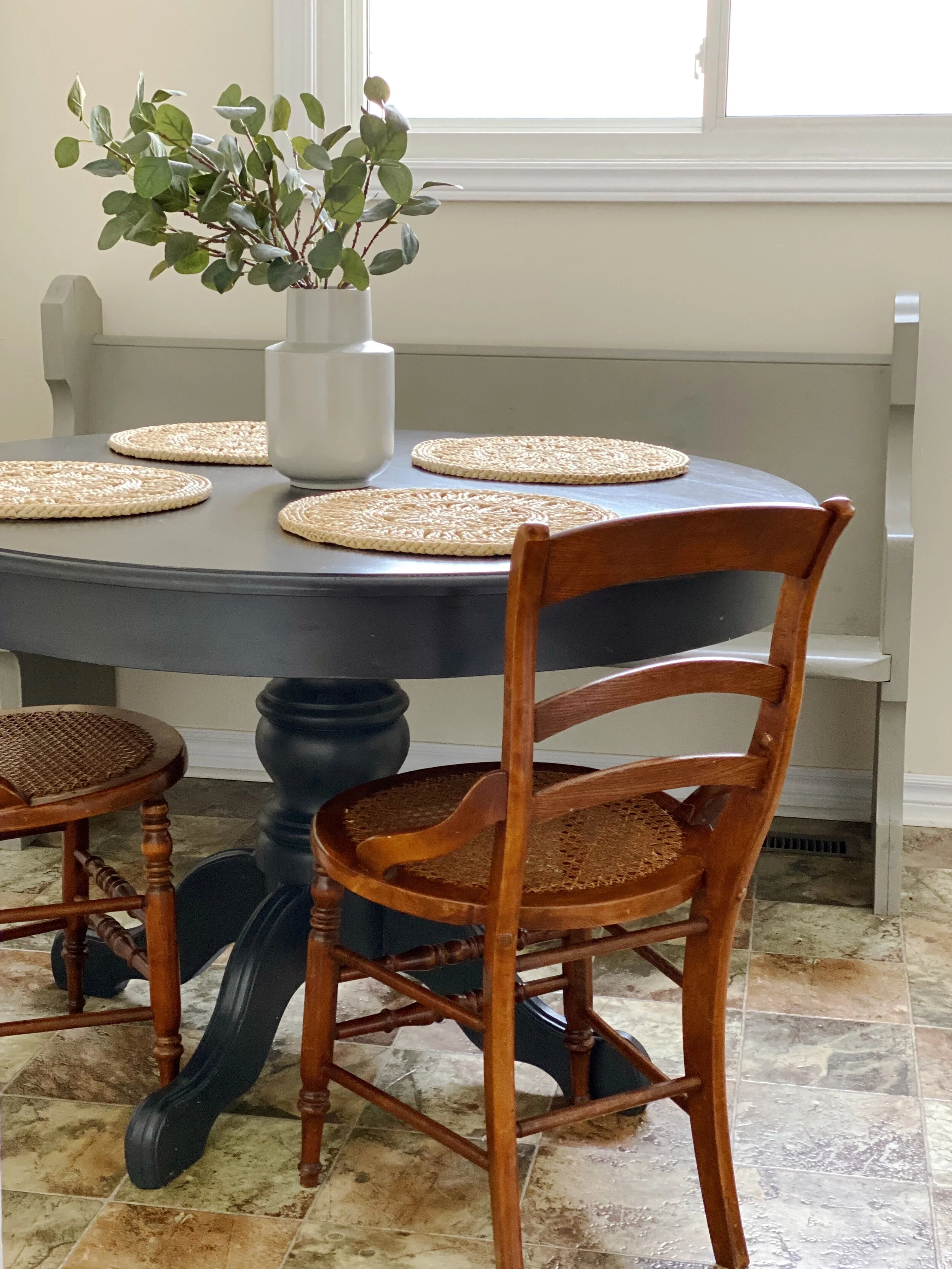How To Curate a Secondhand Home
I truly believe that there is a time and place to purchase new, but one of my favourite ways to establish our home is through secondhand purchases. I often overlook how much of our home is actually made up of secondhand items until someone asks me where a particular piece of furniture is from and I tell them, yet again, that I bought it off a buy-and-sell. I think that part of this has been from a place of necessity - when we moved into our home a couple of years ago, we gained a significant amount of square footage from the studio-style apartment we had been living in previously. We barely had any furniture to bring along and a pretty tight budget that prevented us from filling up our new space right away. But on the other hand, part of it has been from the part of me that truly enjoys the hunt and satisfaction that comes from seeking out previously-loved treasures.
My style is something I have very rarely been able to narrow down. If I’m being honest, I don’t think I even have a style because I truly love bits and pieces from nearly every defined design style out there. That fact has been my friend when it comes to buying secondhand, though, as I like a little bit of an eclectic mix and an eclectic mix is exactly what you’re going to find when you start to hunt. Yet how do you strike the right balance of achieving a collected look without making your home look like a junkyard or a high school youth room?
I’m not sure I have particularly mastered that answer, but I have gained some insight along the way and I want to share some of my top tips for curating secondhand items in your home. I’ll even share some examples in our own home too.
Tip One - The Gut Check.
I’m actually quite particular about what I bring into our home and I have found that my best guide for secondhand furniture shopping is always my gut. There are occasions when I see something on a buy-and-sell site that seems interesting enough to consider so I hum and haw over it for a while, casually message the seller to keep my options open, and feel like if it works out then it works out. But then there are occasions when I see something on a buy-and-sell site and instinctively rush to reach out to the seller to arrange a pick-up and will pretty well rearrange my schedule for the day to make sure I can work with them to get it.
The difference in my instinctual reaction to a listing is usually a really telling guide about whether it’s a good piece or not. And I’m not talking about the quality of the piece when I call it a good piece - I’m talking about the value I personally find in it. Sometimes we don’t know what our style is or what we are particularly looking for until we see it. Our gut can help make that clear by showing us what we are willing to do to make the purchase or exchange happen. Whether you are browsing through a buy-and-sell site like Facebook Marketplace or Kijiji, hopping around garage sales, hitting up thrift stores, or considering a piece that your grandparents are trying to offload on you, consider your gut reaction. Would you pay the asking price? Would you change your schedule to arrange a pick-up? Do you feel like you need to have it? Would you be willing to put the time and effort into repairing or cleaning it?
When we were setting up our first home right before Curtis and I got married, my neighbour was preparing to move and put a crappy little slider cabinet at the road. I very rarely pick up pieces on the side of the road, but when I spotted it, my immediate instinct was that I had to have it. It wasn’t particularly well made and had quite a bit of smoke damage from years of living with an indoor smoker (ick!), but something about the size and style was so appealing to me that I couldn’t get it out of my mind. We picked it up, I put the effort into deep cleaning it, and it has lived with us ever since. It is the most versatile little piece of furniture and I still love it just as much now as I did then - I don’t know if I will ever get rid of it! That’s the gut check tip in action.
Tip Two - Have a specific need or use in mind.
People list or sell items to declutter the things they no longer have a use for and so the reality is that more often than not, secondhand furniture is going to feel like a steal of a deal. If you purchase or pick up every piece of furniture that has a good price tag and some potential, you are quickly going to find yourself in the highschool youth room scenario I mentioned above. When shopping secondhand, you have to get comfortable with letting go of the deals that do not immediately serve you. The best way to do that? Always have a specific need, space, or use in mind.
There have been months when I have purposefully not looked at our local buy and sell listings because I wasn’t ready to find a particular piece of furniture. Items come and go on listing sites all the time, so I try not to look for something until I absolutely need it. Otherwise, you will either find yourself buying things you don’t need or repeatedly having your heart broken when you see something great but exercise some discipline and don’t act on it. Of course this requires a balance, as being patient and consistent is part of the game and requires thinking ahead and keeping your eyes peeled. But you should really be careful about only purchasing the things you need in your space, not filling your space with a bunch of good deals.
When I was making over our office, I wanted to find a hutch or cabinet that I could store my craft supplies in. I waited to look until I went through and organized most of my craft supplies so I knew exactly how big of a storage cabinet I would need to fit it all inside. Once I had some specific measurements and ideas in mind, the process of finding the perfect cabinet happened pretty quickly and I’m thankful that I waited until I knew exactly what I would need. This cabinet is the perfect size for our office and holds everything I need it to without being too clunky. I think I probably would have went with something much bigger if I just purchased something on a whim and didn’t wait to assess the purpose I needed it to serve. Always have a plan!
Tip Three - Have a big picture vision.
A great way to ensure your secondhand furniture looks and feels intentional is to have a big picture vision for your space. Finding the balance between new and secondhand is really what makes your home look much more curated rather than a collection of hand-me-downs. My favourite way to do this is through a moodboard.
Creating an overall vision (with visuals!) for a room will help you while secondhand shopping in two different ways. First of all, it will help you allocate where you will spend your money and where you can save by determining your non-negotiables. For example, you may determine that you would never buy a secondhand sofa so you know you will be purchasing that piece of furniture new, but to offset that, you may be open to purchasing a secondhand coffee table. That sets you up to keep your eye open for a coffee table. Second of all, an overall moodboard of your space will give you a visual to compare any potential secondhand purchases against to see whether they actually work with what you already have or are planning to add. If you have your moodboard on hand, you can try adding in the specific image of the coffee table you find on a buy-and-sell site to see if it works with the other design elements in your room before committing to purchase it. I’m a visual person and having the big picture in mind helps me more confidently make my decisions.
This tip was really useful when curating our eat-in kitchen area. I had a visual in mind of the type of space I wanted to create - a really cozy feeling space with a round table, some sort of bench, and a pendant light fixture. With this idea in mind, over time I was able to collect the pieces I needed to create this vision in our kitchen. I sourced the light fixture new, used an old church pew I already had, and eventually found a round table and the perfect set of antique wooden chairs to make the space exactly what I had envisioned. With each item I added, I was able to compare it against my original vision for this corner.
Tip Four - Consider customizing through DIY.
You have no control over what you will find secondhand and often your exact vision will never become available. But if you are willing to get creative, you can pretty well make anything work for your space. This is my favourite tip for secondhand furniture shopping because even on a tight budget, you can still make your dream pieces a reality.
It’s pretty tricky to find new secondhand pieces that are affordable, so it’s likely that the pieces you find will be old, well-used, dated, and maybe even damaged. If you learn to look past the imperfections and colour of items to see the bones and potential, you can find some pretty amazing treasures. This tip also connects back to the last tip, because sometimes all you need to do is imagine a piece painted differently to see how it can fulfill your vision.
Since we moved into our home, I have wanted to add a caramel leather couch or set of chairs. However, with two cats who have a nasty habit of picking furniture combined with a tight overall budget, we realized that it wasn’t something we could make happen. However, when I came across a tutorial about painting upholstery (!!!) to look and feel like leather, I decided to grab a set of secondhand accent chairs (with a low upfront investment of $30) and try to bring my vision to life. These chairs now live in our cozy room and were a really affordable (and fun!) way to get the look for less. Sometimes, all you need is a little bit of paint.
Tip Five - Be consistent and be patient.
If you only hear one tip from this entire list, let it be this one. Curating a secondhand home flat out takes time and patience. Secondhand shopping is like treasure hunting - you don’t always find the treasures. You will get discouraged. You will buy items you aren’t in love with. You will regret missing out on items you wished you went for. You will have a lucky day. You will have an unlucky day. You will feel like there is nothing that could work. You will feel overwhelmed with options that could work.
It really is a long game that takes practice. The best part is that usually the items are inexpensive, so if you really aren’t happy with something, just let it go and move on. Resell it. Find something else. Try to paint it. Rearrange between rooms. Start fresh.
The most important thing is to just keep your eye out and just keep trying. It really makes it so worth it when you finally find the perfect piece.
Are you a secondhand treasure hunter? What are some of your tips for curating a secondhand home? I hope you find these tips helpful for finding your next hidden treasure!







